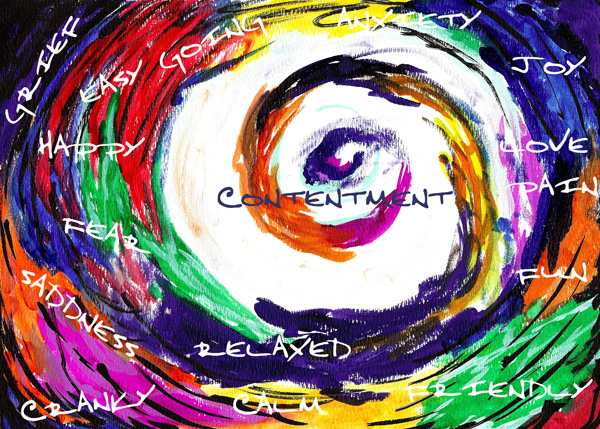Do you ever have worrisome thoughts that race through your mind causing anxious feelings? Do the thoughts keep you up at night? Do you get overwhelmed and then shut down emotionally? What we think has direct influence over what we feel so the ability to recognize and manage our thoughts is key to managing our emotions and mood.
Here are the first steps in learning to manage your thoughts and feelings. As you become more aware of your own ability to recognize, stop, challenge, and change your thoughts, you will start to feel less stressed.
1. Recognize your body’s physical responses. Sometimes we first recognize an emotional path to our thoughts because our bodies are physically responding to unrecognized thoughts or external stimuli. Our bodies give us a clue that we are feeling “something”. Because we know our thoughts can influence our feelings, we can then start to back up this physical reaction to feelings and thoughts.
2. Acknowledge your Default-Zone thinking: Your default zone is your “go to”, automatic thinking that has been ingrained over time due to various life influences and affects how your perceptions have been framed. When a troublesome thought infiltrates, use a “STOP” sign or other visual to help your brain re-track for a nano-second so you can remind yourself to take a deep breath (inhale 5 seconds, exhale 5 seconds…repeat). Take time to imagine your breath as a color moving through your body. Count slowly.
3. Ask yourself, “Is this thought based in reality”, “Am I making it up?”, or “What am I afraid of?”
4. Take action. Because you are in control of what you think, you can choose your thoughts. Choose a decisive action word like “delete”. See yourself using the delete button on your computer as you are deleting these negative thoughts. It is important not to fight against the thought or try to push it away – simply acknowledge the thought and observe the thought going away. You can also try envisioning a plane with a flying sign (you know, the ones you see at the beach sometimes). See your thought on the sign as the plane flies through and beyond your sight, off into the distance. Repeat this exercise with other thoughts if they linger.
5. Reframe. After you’ve deleted the old thought, replace it with a general positive statement. Sometimes using an opposite thought to the one you were having is an easier place to begin when trying to think of positive thoughts. Thinking of things you are grateful for is an instant re-framer! Challenge yourself: “What would be the opposite of what I was just thinking?” or “What am I grateful for?” Write these things down.
As you moved through these steps, did you notice your emotional state? Did it change by the end of the process? Make note of what you recognize. Write it down.
What we are trying to do is create awareness and focus. This will take practice, but do it as often as you need to. You will be creating a new pathway for your brain to follow when you have distressing thoughts. This is just the beginning of a process that can readily move you toward a more peaceful mind.





